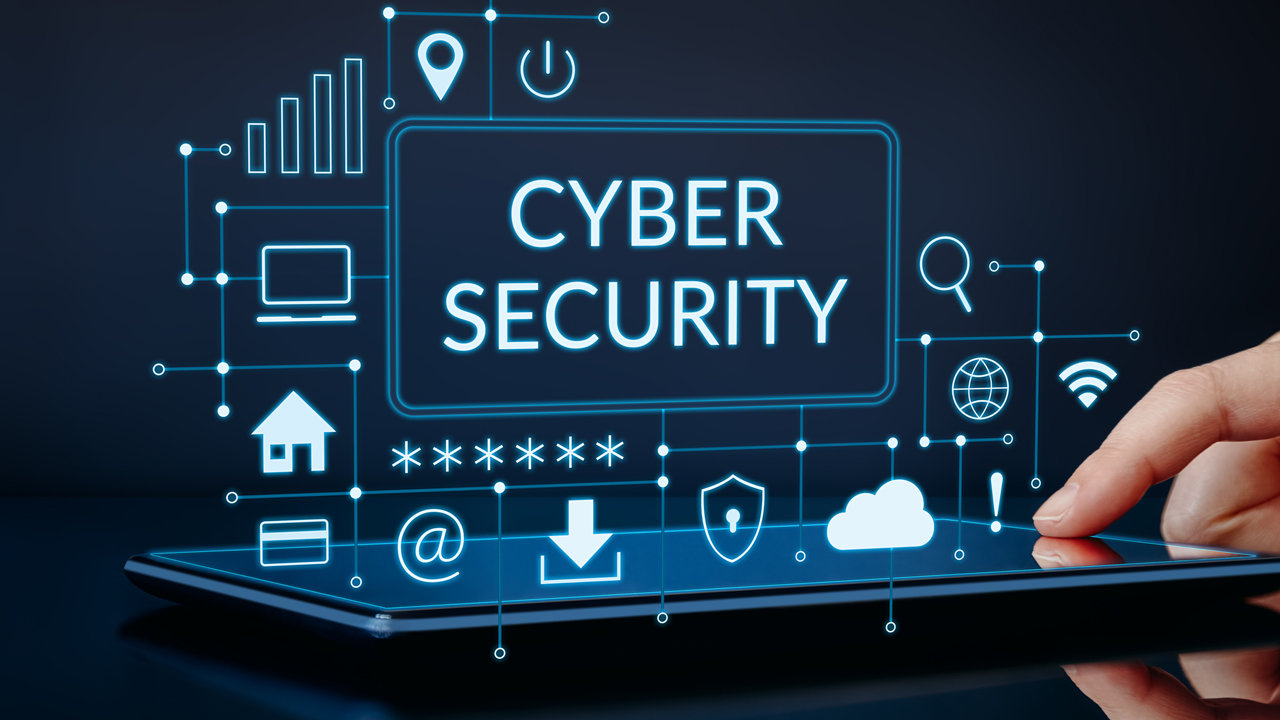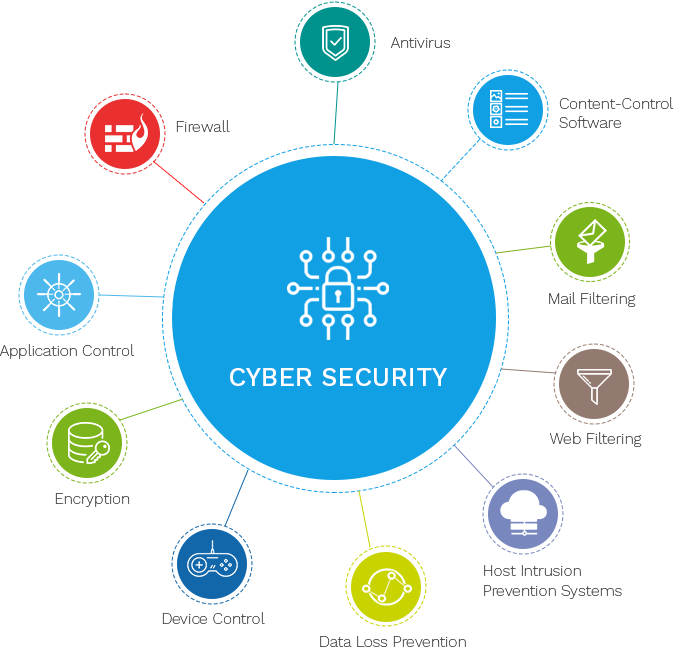Exploring Just How Cyber Safety Functions to Protect Your Online Presence
In today's electronic landscape, securing one's online visibility has actually ended up being increasingly critical, with cyber risks progressing at an alarming speed. Cyber protection utilizes a complex method, incorporating advanced technologies like firewall programs, file encryption, and multi-factor verification to secure sensitive info. The intricacy of these systems raises questions about their performance and implementation. Exactly how do these technologies work with each other to develop a seamless guard versus cyber risks? And what duty does behavioral analytics play in this intricate web of safety and security measures? These are crucial inquiries that merit more expedition in our pursuit for digital security.
Comprehending Cyber Dangers
In the digital landscape, cyber hazards represent a formidable challenge, needing a nuanced understanding of their nature and prospective effect. These dangers include a vast array of harmful activities orchestrated by individuals, teams, or even nation-states, targeting delicate data, interrupting procedures, or causing reputational damage. Recognizing cyber hazards begins with determining the various kinds they take, consisting of malware, phishing, ransomware, and dispersed denial-of-service (DDoS) assaults.
Malware, or malicious software application, consists of infections, worms, and trojans that penetrate systems to steal information or cause harm. Ransomware encrypts victims' information, demanding a ransom for its release, posturing considerable functional and financial risks.
Identifying the inspirations behind these hazards is vital. By thoroughly understanding the varied nature of cyber threats, companies can much better prepare for prospective susceptabilities and strategically allocate sources to boost their defenses versus these ever-evolving threats.
Secret Cyber Safety Technologies
As organizations strive to guard their digital assets, vital cybersecurity modern technologies play an essential duty in strengthening defenses against cyber dangers. IDS display network website traffic for suspicious activities, while IPS actively block potential hazards, ensuring real-time security.
Additionally, anti-viruses and anti-malware options continue to be essential in recognizing and alleviating harmful software. They utilize heuristic and signature-based strategies to detect unknown and known hazards. Endpoint discovery and reaction (EDR) systems better enhance safety by providing extensive exposure right into endpoint tasks, allowing speedy occurrence feedback.
Identity and accessibility management (IAM) modern technologies make certain that only accredited individuals access to critical sources, consequently lowering the risk of unauthorized information gain access to. Multifactor authentication (MFA) includes an extra layer of protection, needing users to supply several verification elements.
In addition, safety and security info and occasion administration (SIEM) systems accumulation and assess protection data, supplying understandings right into prospective vulnerabilities and promoting aggressive risk monitoring. These modern technologies jointly create a durable framework, encouraging companies to keep a resilient cybersecurity pose.
Function of Firewalls and File Encryption
Firewalls and encryption are integral elements of a robust cybersecurity technique, each serving an unique yet corresponding role in securing electronic settings. Firewalls work as obstacles between relied on inner networks and untrusted exterior entities. By managing outbound and inbound network web traffic, they protect against unapproved accessibility to systems and information. Firewall programs utilize predefined safety guidelines to block or permit data packets, successfully securing sensitive info from cyber risks. They are the very first line of defense, filtering system web traffic and guaranteeing just genuine communications are enabled.
File encryption, on the various other hand, transforms understandable data right into an inscribed layout that can only be understood with a details cryptographic secret. This procedure ensures that information remains safe and confidential throughout transmission or storage space. Even if obstructed, encrypted info is rendered ineffective to unapproved customers without accessibility to the decryption secret. Encryption is crucial for protecting delicate info such check these guys out as monetary data, personal recognition information, and exclusive company info.
Together, firewall softwares and security supply a comprehensive protection system. While firewall softwares manage gain access to and guard networks from unauthorized access, file encryption safeguards data stability and confidentiality. Their combined application is vital in mitigating risks and guaranteeing the protection of electronic possessions in a progressively interconnected globe.

Significance of Multi-Factor Authentication
While firewall softwares and security form the backbone of cybersecurity, improving defenses even more needs the implementation of multi-factor verification (MFA) MFA adds an extra layer of security by calling for users to validate their identity through two or more different factors before accessing to sensitive info or systems. These elements commonly include something the individual knows (a password), something the user has (a safety token or mobile phone), and something the user is (biometric verification such as a fingerprint or face recognition)
The relevance of MFA in protecting online presence is critical in today's digital landscape. With original site cyber risks ending up being significantly sophisticated, relying only on standard password-based verification leaves systems at risk to breaches. MFA significantly reduces the danger of unauthorized gain access to by making it tremendously more tough for cybercriminals to compromise an account. Even if a password is stolen, the extra verification steps function as a powerful barrier.

Behavioral Analytics in Cyber Safety And Security
Behavior analytics stands for a pivotal advancement in cybersecurity, using an innovative method to hazard detection and prevention. By examining patterns in customer habits, this technique identifies anomalies that might show potential cyber dangers. Unlike traditional safety and security measures, which typically rely upon predefined guidelines and signatures, behavioral analytics leverages artificial intelligence and statistical models to establish a standard of normal activity. When deviations from this standard occur, it sets off signals for more investigation, making it possible for much faster feedback times to prospective breaches.
This innovation is specifically reliable in detecting insider hazards and zero-day strikes, which are frequently missed by conventional safety and security systems. Expert risks, web where individuals within a company abuse accessibility benefits, can be tough and specifically damaging to discover. Best Cyber Security Services in Dubai. Behavior analytics gives a layer of examination that can capture subtle discrepancies in habits, such as uncommon accessibility patterns or information transfers, before they intensify into considerable safety and security cases
Moreover, the dynamic nature of behavioral analytics allows it to adapt to progressing risks, providing continual defense as cyberattack methods transform. As organizations increasingly count on electronic facilities, including behavior analytics into cybersecurity strategies makes certain a resilient protection, keeping and securing delicate information depend on in electronic interactions.
Final Thought
Finally, the diverse method of cyber safety, including technologies such as firewall softwares, file encryption, multi-factor verification, and behavioral analytics, plays an essential duty in protecting on the internet visibility. By filtering website traffic, securing data transmission, calling for numerous confirmation methods, and checking individual activity for abnormalities, these technologies collectively address the complexities of contemporary cyber hazards. This layered defense not only safeguards personal and monetary details however also makes sure continuous defense in an ever-evolving electronic landscape.

As organizations strive to guard their electronic possessions, key cybersecurity technologies play a vital function in fortifying defenses versus cyber threats. Firewalls use predefined safety and security rules to block or allow information packages, successfully shielding sensitive information from cyber hazards.This modern technology is specifically efficient in identifying expert hazards and zero-day attacks, which are often missed by traditional safety systems. By filtering website traffic, securing data transmission, calling for numerous verification methods, and monitoring user task for abnormalities, these technologies collectively resolve the intricacies of contemporary cyber dangers.